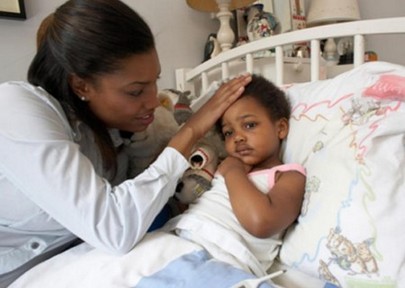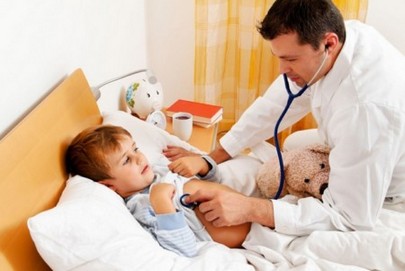Roseola

Contents:
- Causes of Roseola in Children
- Symptoms of Roseola in Babies
- Diagnosing of Roseola in Kids
- Treatment of Roseola
- Prevention of Roseola
Roseola in Baby
Child roseola is a virus which usually infects small children mostly under 2 years old. Another common name for this roseola is sudden exanthema. It is also known as child rash, sixth roseola, or pseudorubella. People often mistake child roseola symptoms for signs of ARVI, rubella or allergy; that is why it can be difficult to diagnose it.
Causes of Roseola in Children
The cause of child roseola is 6th and 7th type of herpes pathogen. These viruses cause chronic fatigue syndrome for adults and roseola for children. The virus gets into skin and tissues, causes their damage, infects mononuclear cells, reacts with immune cell factors and causes exanthema (rash on the skin).
The roseola is very common among children; however, the infection mechanism is not studied yet. Supposedly (and most likely), the virus which causes roseola is airborne. The incubation period is 5-15 days, 3-7 days on average. Children are most likely to get roseola during spring or fall.
Symptoms of Roseola in Babies

Child roseola begins with a sharp rise of body temperature to 39-40,5 degrees. It is not followed by vomiting, rheum, cough, catarrhal phenomena, or changes in the BM. The temperature remains high for 3-5 days, and the effectiveness of antipyretic drugs is minimal. A critical drop of temperature takes place on day 4, and in10-20 hours after the condition becomes stable, pink spotty popular rash, which stands out from the skin a little, covers the whole body. The rash stays on for the next few hours or days.
After the rash appears, no temperature rise takes place. In 4-7 days exanthema without any spots or peeling appears. A characterizing symptom is that rash spreads from torso onto face, neck, arms and legs. The most abundant rash is found on child body.
Additional roseola symptoms: swollen cervical and BTE (rear) lymph nodes, the child is sluggish, irritated, and eats bad. Sometimes swollen liver or spleen can take place. The amount of lymphocytes in blood increases and the amount of leukocytes decreases.
Diagnosing of Roseola in Kids
Apart from visual examination and evaluation of the symptoms of child roseola, they also carry out blood tests and sometimes use serologic diagnostics (immunoglobulin G titer increases 4 times).
When diagnosing the roseola, it is important to differentiate roseola from the following: drug rash, non-poliovirus enterovirus infection, infectious erythema, sepsis, otitis, bacterial pneumonia, meningitis, rubella, and measles.
Treatment of Roseola

There is no special treatment for child roseola. To relieve the child’s state when the temperature is high while he has roseola, they give him antipyretic drugs – paracetamol and the like, and supervise him so that dehydration does not happen. The room where the child is needs to be constantly ventilated.
Symptomatic treatment of child roseola with immune suppression (suppression of the immunity because of the recent illnesses and stresses) goes with taking acyclovir and foscarnet.
If the antipyretic drugs’ effectiveness is minimal and the child has convulsions, you need to get the doctor’s help.
Prevention of Roseola
Since the reason for child roseola is infection with the virus, the prevention of it is in refraining from contacting infected children. That is why the children with this roseola, just as with any other infection, should be isolated until they are completely healthy.
Video: Treating Roseola in Kids